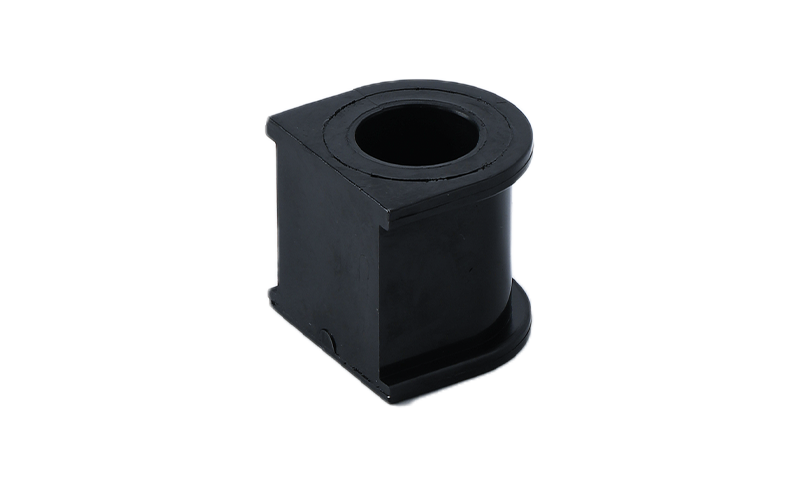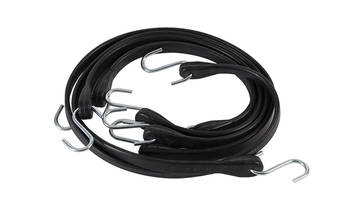Automobile Rubber Bushings: What Everyday Drivers Should Know
When you drive your car on imperfect roads, the often overlooked parts called Automobile Rubber Bushings play a key role in how the ride feels and how safe the vehicle behaves. These small rubber mounts link suspension arms, stabilizer bars, engine brackets and the vehicle frame in a way that absorbs noise, shock and motion. For a daily commuter, noticing a change in feel or sound can signal that these components are no longer doing their job.

Material and Design Considerations of Rubber Bushings
Rubber bushings are designed to flex slightly under load, providing vibration isolation and reducing harshness. They are typically made from natural rubber or synthetic elastomers chosen for both resilience and cost‐efficiency. Modern tests report that high‐quality rubber mountings can reduce vibration transfer by over 40 %. One study of suspension bushings found that rubber parts subjected to repeated deformation at thousands of cycles begin to lose elasticity after about 30,000 miles.
Comparing to alternatives: polyurethane bushings offer greater durability under stress, often lasting 25-40 % longer in heavy‐duty use, but they tend to transmit more road and engine noise into the cabin. For daily use on paved roads, rubber is often the more balanced choice.
Everyday Symptoms That Drivers Encounter
A driver might hear a faint “clunk” when going over a small bump, feel increased vibration through the steering wheel, or spot uneven tire wear; these are common signs that rubber bushings are degrading. When those bushings no longer control movement effectively, the suspension geometry can shift, causing the vehicle to pull slightly or to handle less precisely. For example, a control arm bushing that has separated from its metal shell can allow axle movement exceeding 3 inches under load in some heavy vehicles. Smaller cars might show effects earlier in the form of creaks, squeaks or a loose steering feel.
Market Trends and Material Trade-Offs
The automotive bushing market remains large and growing because nearly every suspension system uses them. Rubber bushings continue to represent the majority share in consumer vehicles because they combine comfort, cost and acceptable life span. Given a comparative scenario, manufacturing cost for rubber bushings can be 30-40 % less than polyurethane types, making them the economical choice for high-volume models. On the flip side, for off‐road, towing, performance or heavy-load platforms, some manufacturers intentionally select polyurethane or hybrid materials to meet stronger durability targets.
Maintenance and Practical Advice for Drivers
From a maintenance standpoint, drivers should inspect bushings around every 20,000 miles or when the car feels different. Key inspection points: visible cracks on the rubber, separation of the rubber from its metal sleeve, or noticeable deformation. If the ride has become noticeably rougher or steering less sharp, those are good prompts to ask a technician to check the bushings. Replacing an entire set of worn bushings can restore ride comfort and reduce secondary wear on components such as ball joints, sway‐bar links and tyres. During installation, it is important that bushings are pressed in square and torque is applied at ride height; poor installation dramatically shortens lifespan.
In conclusion, the term Automobile Rubber Bushings captures a component that many drivers ignore until something changes in how the vehicle drives. Recognising early signs, understanding the trade-offs between rubber and alternative materials, and practising proper maintenance habits all help keep your vehicle safe, comfortable, and reliable.
NEXT:Suspension Control Arm Bushing – Enhancing Vehicle Performance and Safety
Related Products
-
 View More
View More
Industrial Flat Nature Tarp EPDM Rubber Strap with Hooks
-
 View More
View More
100% EPDM 9"/10"/15"/21"/31"/41" Rubber Tie Down Tarp Straps with S Hook
-
 View More
View More
7-wire hook light truck tire chain dobby tensioner
-
 View More
View More
Blue multi- arm tighteners for light truck tire chain with 6 wire hook
-
 View More
View More
JB-21 Rubber Foot Pad, Cargo Bar Pad
-
 View More
View More
Plastic/Rubber Bundled Cargo Stepping Board


